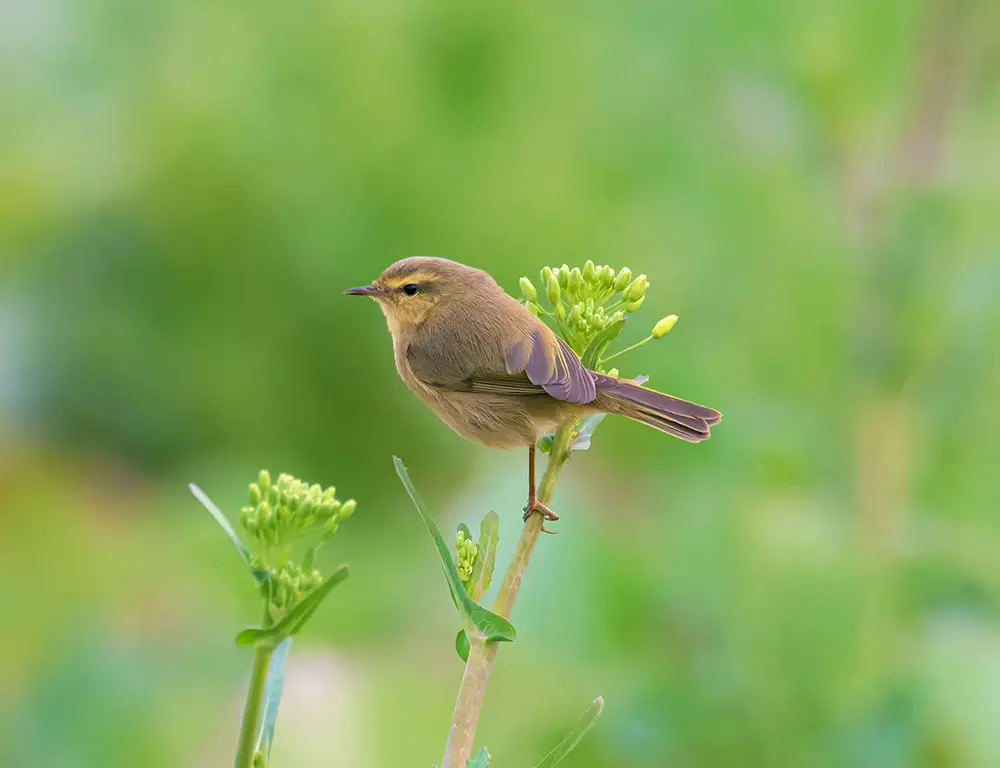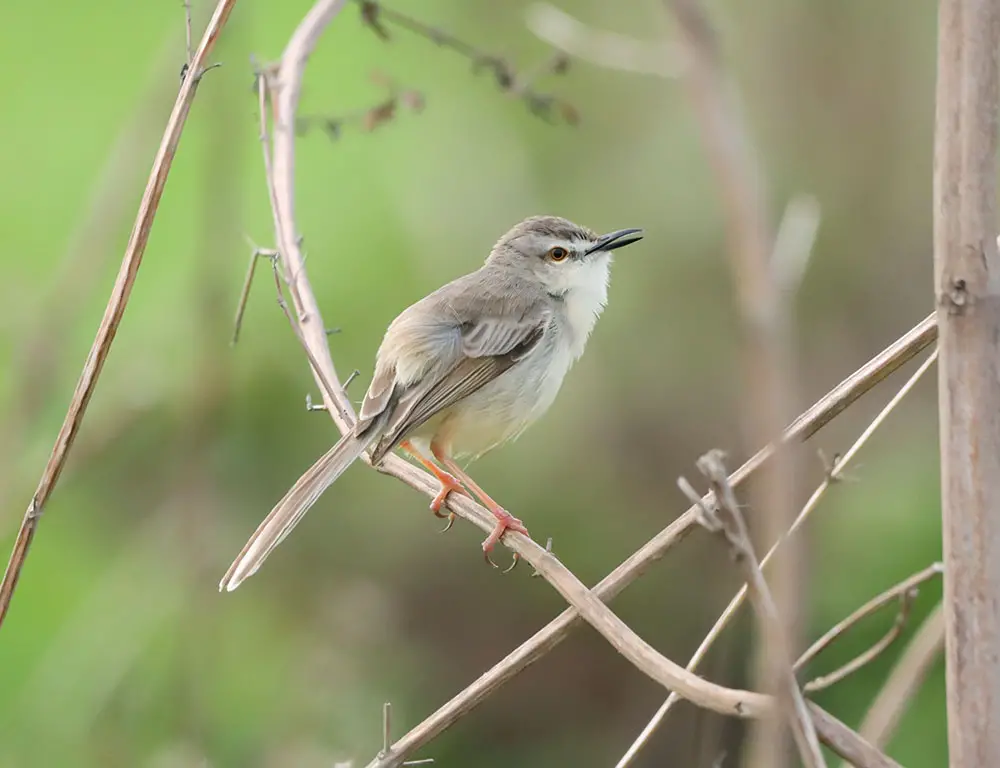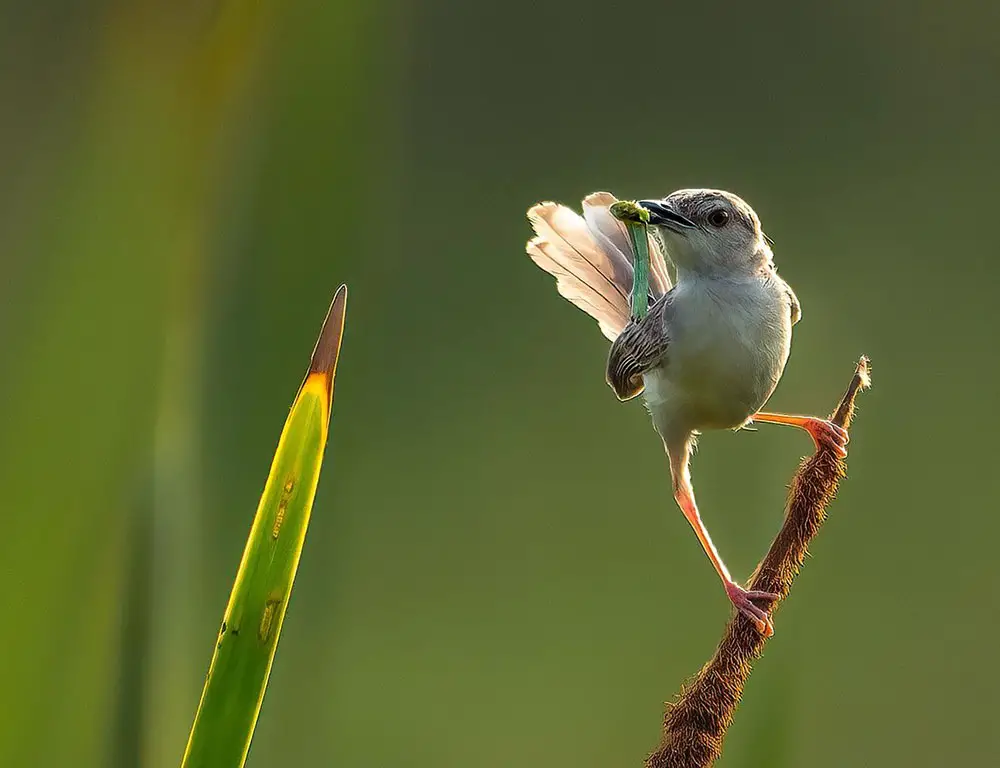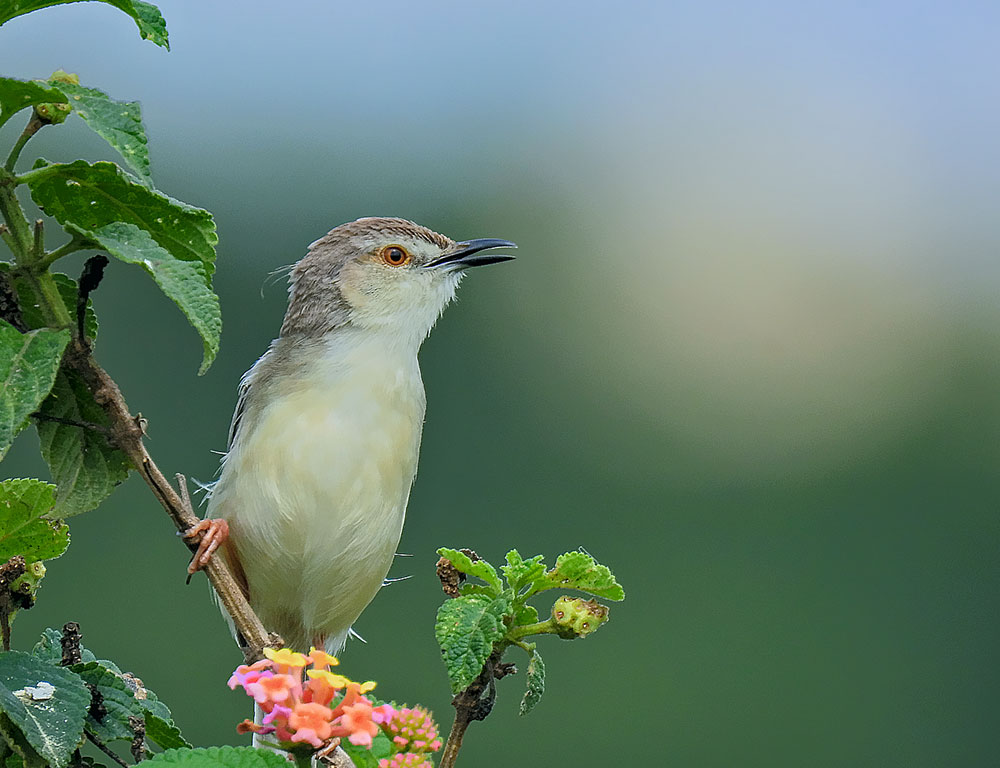Let’s dive right into the enchanting world of the Plain Prinia. This bird species, also known as the Plain Wren-Warbler or White-browed Wren-Warbler, is a common sight in many parts of Asia. It’s small and elegant, with a distinctive song that sets it apart from other birds in its habitat.
Plain Prinia has an undeniably unique appearance with its white brow and light underparts contrasted by a brownish-grey upper body. What catches my attention, though, is their behavior.
They’re constantly on the move – flitting around in search of insects to feed on or materials for their nest. This creature may be small, but don’t let its size fool you; there’s much more to learn about this fascinating bird species!
Physical Characteristics of Plain Prinia

The Plain Prinia, also known as the white-browed wren-warbler, is a small bird with several distinctive physical characteristics:
Size
The Plain Prinia typically measures 4 to 5 inches long, making it relatively small.
Coloration
The upper parts of the bird are generally brownish or grayish, while the underparts tend to be whitish or pale yellow. The colors are muted and earthy, providing effective camouflage against predators.
Eyebrows (Supercilium)
It has a striking white eyebrow line that extends from the base of its bill over the eye, which is a defining feature of the species. This eyebrow line helps reflect sunlight away from their eyes.
Tail Feathers
The tail feathers are long and often held upright when the bird is alert or excited. They feature sharp black and white bars across them, creating an interesting pattern, especially during courtship displays.
Shape
The Plain Prinia has a reasonably round body with short, rounded wings. These wings are optimized for maneuverability rather than speed, essential for navigating through dense foliage and quickly escaping.
Habitat and Distribution

The Plain Prinia, with its fascinating habitat preferences and broad distribution, showcases remarkable adaptability across its range:
Habitat
The Plain Prinia is primarily found in tropical regions from Pakistan and India to Southeast Asia. However, it doesn’t inhabit just any terrain within these areas. Instead, it prefers open grassland habitats, including fields and scrublands.
These birds avoid dense forests and high-altitude mountain regions, instead opting for lower elevations with ample vegetation.
Despite residing in open areas, their brownish-grey plumage provides excellent camouflage among the tall grasses, making them adept at blending into their surroundings.
Distribution
The Plain Prinia’s distribution covers impressive distances across Asia. Key locations where they are found include:
- Pakistan: Particularly prevalent in the Sindh and Punjab provinces.
- India: Widespread across most lowland areas.
- Southeast Asia: Extensively found in countries such as Cambodia, Vietnam, Laos, and Thailand.
Behavior and Diet of Plain Prinia

The Plain Prinia, also known as the Plain Wren-Warbler or White-browed Wren-Warbler, is a highly active bird species with fascinating behavioral patterns and dietary preferences.
Behavior
- High Activity Level: Plain Prinias are known for their constant movement, rarely staying still for long periods. They spend much of their day hopping from branch to branch for food or engaging in social interactions.
- Territorial Nature: These birds are territorial and often battle with other species to establish dominance over a particular territory. They may fluff their feathers and perform elaborate displays to assert their authority.
- Nesting Habits: Plain Prinias prefer to build their nests low in tall grasses or shrubs, usually no more than a meter off the ground. Their nests are dome-shaped structures meticulously crafted with grass blades.
Diet
- Insectivorous: Plain Prinias primarily feed on small insects, making them insectivorous birds.
- Hunting Technique: They are adept at catching tiny flying insects mid-air, showcasing remarkable agility and precision in their hunting skills.
- Foraging Behavior: Besides catching prey mid-flight, they also forage through foliage and bark crevices in trees and bushes to find hidden insects.
- Diet Composition: Their diet primarily consists of beetles (40%), caterpillars (30%), ants & spiders (20%), and moths & butterflies (10%).
Conservation Status

The Plain Prinia, with its charming presence and adaptable nature, indeed enjoys a favorable conservation status.
Here’s a summary of its conservation status and key insights:
IUCN Red List
The Plain Prinia is classified as “Least Concern” on the International Union for Conservation of Nature (IUCN) Red List. This designation indicates that the species is widespread and abundant, with no significant threats to its population.
Meaning of “Least Concern”
The “Least Concern” status signifies that the species is not currently facing immediate risk of extinction. It suggests that the Plain Prinia’s population is stable and healthy, with adequate distribution across its range.
Habitat Adaptability
Plain Prinias, thriving in various environments, including wetlands, grasslands, and even urban gardens, demonstrate remarkable adaptability. This adaptability has enabled them to maintain stable population numbers despite habitat degradation in certain areas.
Importance of Habitat Preservation
While the Plain Prinia’s current conservation status is encouraging, preserving its diverse habitats is essential.
Human activities such as habitat loss and degradation can still threaten their populations, emphasizing the importance of habitat conservation efforts.
Population Estimate
According to a study by BirdLife International, the global population size of Plain Prinias is estimated to be around 330 million mature individuals. This sizable population further reinforces their “Least Concern” status and underscores their abundance in the wild.
Conclusion
I’ve spent much time discussing the Plain Prinia, and I hope you’ve learned something new. This feathered friend’s characteristics make it a unique part of our planet’s rich biodiversity.
The Plain Prinia isn’t your typical bird. It’s small in size but big in personality, with its distinct whistling calls and active nature. These birds are widespread in many parts of Asia, making them an integral part of their ecosystems.
We should appreciate these creatures for their beauty or song and their role in maintaining ecological balance. They control insect populations, aiding in pest management. Also, they’re an essential food source for larger predators.
Let’s glance at some key facts:
- Scientific name: Prinia Inornata
- Family: Cisticolidae
- Size: 10 – 13 cm
- Weight: 6 – 10 g
- Lifespan: Up to 3 years
With this knowledge about the Plain Prinia, we can better understand its behavior and lifestyle:
- Active during daytime (diurnal)
- Feeds mainly on insects
- Breeds between April and September
- Builds dome-shaped nests
Remember that every creature plays its part in ensuring the well-being of our environment; even the smallest bird is crucial to our world’s health.
As we continue studying these remarkable creatures, let’s strive to respect their habitats and preserve their existence. After all, understanding more about wildlife like the Plain Prinia helps us know more about our roles within these complex ecosystems.